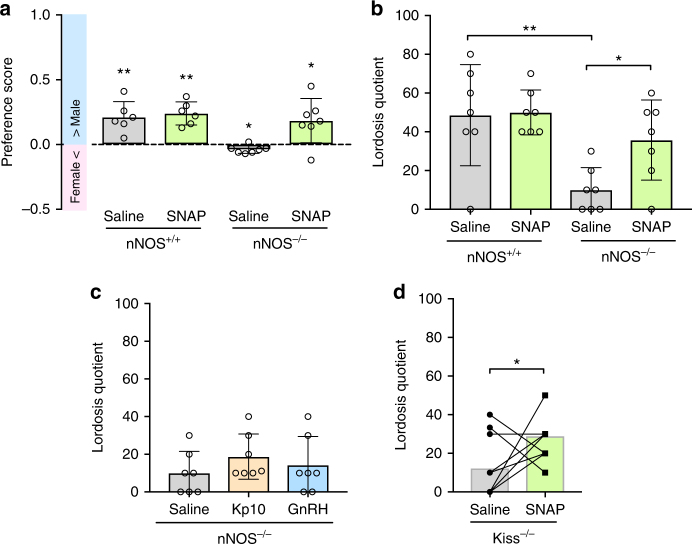Fig. 6.
Mate preference and lordosis behavior depend on nitric oxide signaling. a nNOS knockout (nNOS−/−) female mice do not show a male-directed preference, whereas female control littermates displayed a preference for the male. Strikingly, a single peripheral injection with SNAP+BAY 41-2272, NO donor and soluble guanylate cyclase agonist induced a significant preference for the male in nNOS−/− female mice. *P ≤ 0.05; **P ≤ 0.01; one-sample t test (H0: mean equals 0); n = 6 (nNOS+/+) and 7 (nNOS−/−). b Lordosis behavior is disrupted in nNOS knockout (nNOS−/−) mice, but restored by a peripheral injection of the NO donor SNAP (together with BAY 41-2272); *P ≤ 0.05; **P ≤ 0.01; Tukey’s multiple comparison test; n = 7 per group. c By contrast, a peripheral injection of either kisspeptin or GnRH failed to restore lordosis behavior in nNOS−/− mice; ANOVA; n = 7 per group. d A peripheral injection with SNAP+BAY 41-2272-induced lordosis behavior in Kiss−/− mice; *P ≤ 0.05; paired t test; n = 10 per group. nNOS the neuronal form of nitric oxide synthase, Kp-10 kisspeptin, SNAP S-nitroso-N-acetylpenicillamine. Bars represent the mean ± SEM. For all experimental details, see Supplementary Table 1

